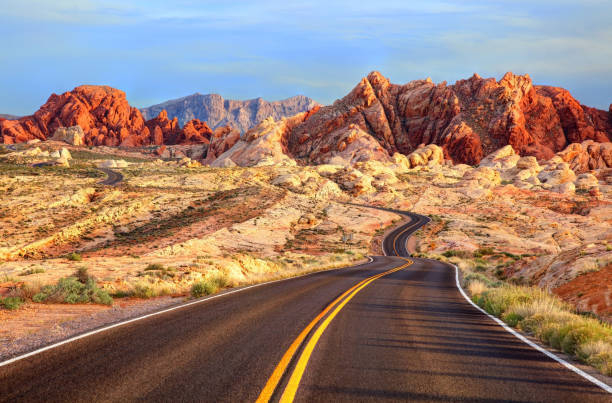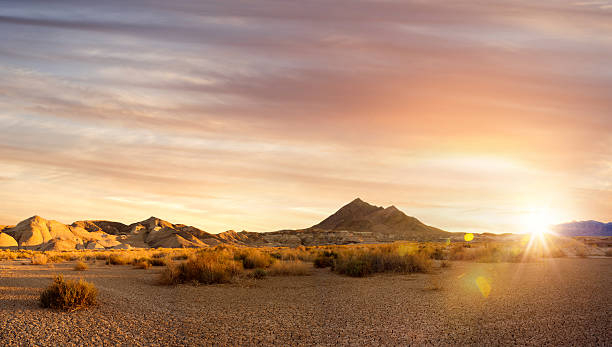Mojave Desert, Nevada
The Mojave Desert is a desert in the southwestern United States that lies under the rain shadow of the Sierra Nevada mountains. It is called after the Mojave Indians. The Mojave Desert is part of the wider North American Desert, which also includes the Sonoran, Chihuahuan, and Great Basin deserts. The Mojave is the smallest and driest of these. The Mojave Desert has conventional basin and range geography, with a broad pattern of parallel mountain ranges and valleys. It is also the location of Death Valley, the lowest point in North America. The Mojave Desert is sometimes referred to as the "high desert" since the majority of it is between 2,000 and 4,000 feet in elevation. It is home to a wide range of vegetation and wildlife.
The Mojave Desert is rich in minerals and metallic elements. Climate causes a buildup of worn bedrock, fine sand, and silt, with both sand and silt deposits converting to colluvium. The flora of the Mojave Desert includes a number of endemic plant species, including the Joshua Tree, which is both an endemic and an indicator species of the desert. The Mojave Desert has more indigenous plants than practically anywhere else on the planet. Although the plants in the area have developed in isolation due to the physical barriers of the Sierra Nevadas and the Colorado Plateau, Mojave Desert flora is not a vegetation type.

















